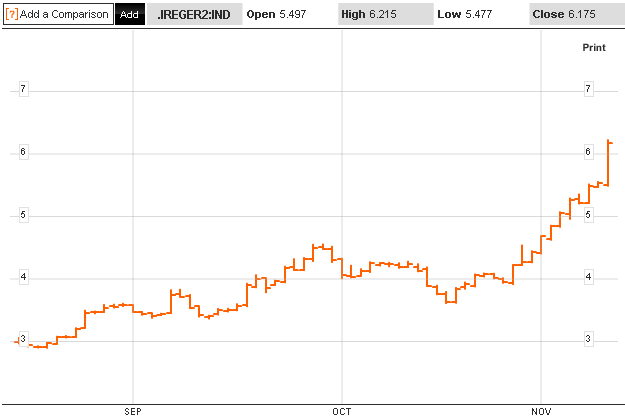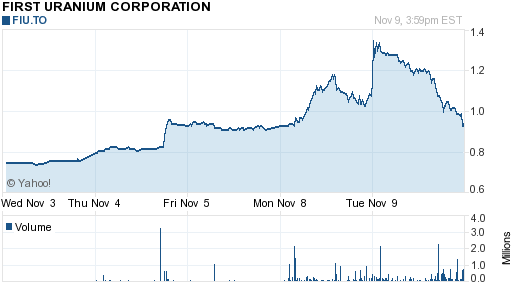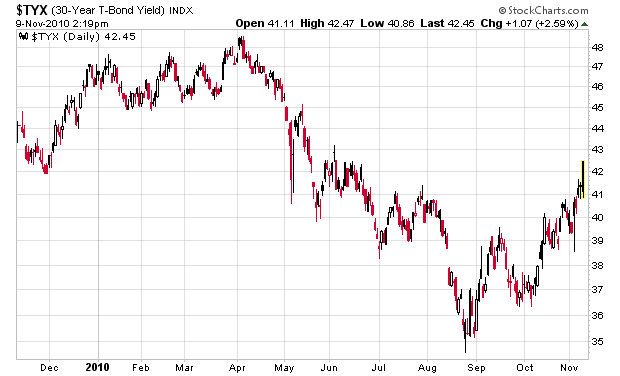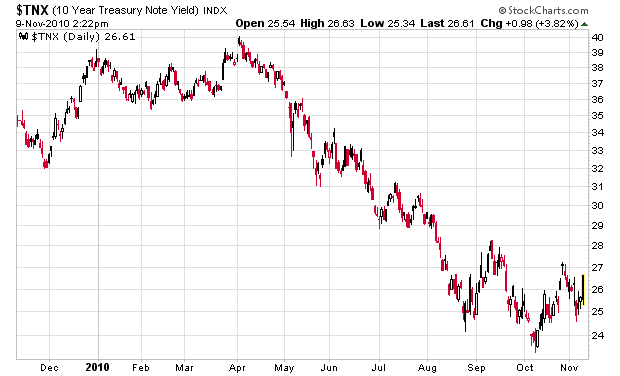It appears that Ireland’s ability to borrow money is becoming much more impaired in the past three months, looking at the 10-year yield on their notes (note that the chart is the spread between the German and Irish 10-year sovereign debt, not the absolute yield to maturity of the Irish 10-year note; Germany’s 10-year debt yields roughly 2.4% at present):
The absolute yield to maturity is here:
Observers should note that during the Greek bond crisis (which peaked in early May 2010) that yield spreads on the same Irish notes went up from roughly 1.3% to 3.0% before trading at a range of roughly 1.6% to 4.5% before this wave of relative selling hit. This corresponds to a yield to maturity on Irish debt of roughly 4.4% to 5.9% and 4.6% to 6.7% after the Greek debt crisis.
Something else to note was that US treasuries were recipients of capital inflows during the Greek debt crisis, which apparently is not happening right now.
I have no further insight other than what is making the news right now, which means it is not tradable information. But it is something to be aware of – there may be another European sovereign debt crisis coming down the pipeline. If a yield spike hit the US government debt market, it would make major financial headlines. There is no telling whether the 50 basis point run-up in the last month is the start of a 5% rise in yield, or whether it is market noise.





